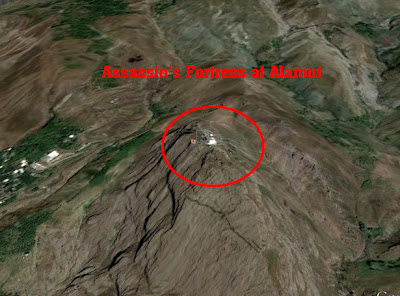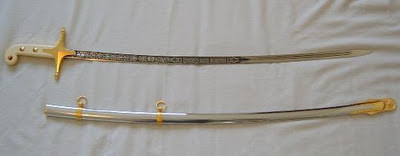The Holy Land is inscribed in our hearts as the place where the holiest of places central to Christianity. It includes Bethlehem where Christ was born, and Jerusalem where he died. And that is what gave the Crusaders a moral foundation for their efforts. Some today belittle that moral foundation pointing out the ordinary mortal demands for wealth. station and salvation. Nine hundred years ago, global trade from the Far West to the Far East went through the Holy Land and a short list of cities. It’s easy when one refers to the Penguin Atlas of Medieval History, one of fine series of historical atlases, which neatly lays out the major routes of trade for a particular period of time.
In 1028 the Arabs had been in possession of the Levant and North Africa. Trade from China went mostly to the Fertile Crescent with some links to Constantinople and the Italian maritime states, particularly Venice. The Byzantine Empire still included the Crimea, Greece, and parts of Italy.
The Seljuk Sultanate

In 1071, however, a Seljuk army led by Alp Arslan defeated the Byzantine at a place called Manzikert where his Cuman mercenaries’ defected and Frankish mercenaries went on their own under a Norman named Roussel of Baileul who set up a short lived kingdom where Ankara is now. The succeeding Byzantine Emperor borrowed some Seljuk Turks and wiped out Roussel and his band.
The biggest damage to the Byzantine Empire was the permanent loss of the Anatolian plateau and the fragmentation of the Seljuk holdings in an arc covering the western half of modern Turkey. One of these fragments would eventually evolve into the Ottoman Empire which ended at the en d of WW1.
The hiring of mercenaries by one ruler or another paid little attention to such things as nationality or even religion. What counted was how much and for how long could they be trusted. We have noted that the Varangian Guard, of Viking descent was considered particularly reliable and who settled down along the Volga and Don forming the first Russian states. An invasion from the East by a blond blue eyed Turkic people called the Cumans displaced the Russian trade down the Dnieper, Don,, and Volga,
The Abbasid Dynasty conquered the Sassanid Empire, a large empire resting on the South on what is the northern border of Iraq, and stretching north to the Aral Sea. After the fall of the Abbasid, a Turkic slave army established the Kwarezmian Empire linking the Silk Road from China to Baghdad. The Turks often put captive soldiers back to work under their administration as "slave armies". This practice continued into the 18th Century.
The southern trade routes, linked India by way of the Red Sea to Cairo or the Persian Gulf to Basra and from there to Baghdad, Aleppo, Damascus and Jerusalem. Modern day Syria was the center of gravity for the movement of goods.
The Fatimid Caliphate
The Fatimid Caliphate ruled from Cairo, which they had built as a counter to Alexandria and accessible to land routes to both North Africa and to the Levant and Arabia. The Fatimid were Berber-Arab from Tunisia, Algeria, and Libya and were ruled by the Ismaili branch of Shi’a. The name comes from Fatima, daughter of Ali. Ali who was murdered in Iraq splitting Islam into long standing divisions the likes of which our forces are all too aware of.
Their significance as to the Crusades has to do with the unfortunate decision to burn the Church of the Holy Sepulcher in 1010, as a demonstration of their zeal. They also persecuted the Christians in the area, driving them out of town, This policy was reversed in large part because the Seljuk Caliphate considered the Fatimid as heretic, and it would not do to have Jews and Christians allied with the Sunni. That and it’s reverse happened anyway. These incidents provided rationale for the Crusades to follow although the Fatimid rebuilt and built facilities for Jews and Christians.
That and Manzikert provided the rational for the Crusades. But we will save that for later as we lay down who the major players were at the time.
The Assassins of Alamut
After the First Crusade, the antagonism between Fatimid Shi’a and the Seljuk Caliphate Sunni made whatever happened in the Levant was at least a three sided conflict. One of the subject peoples of the Seljuk Turks were the Kurds who, then as now, are Sunni and at odds with people who were not Kurds, but especially Shi’a.
Another small group that played a big part in the politics of the day were the Assassins of Alamut (in western Iran) who added considerable drama to politics. The cult of assassins were founded by an Isma’ili (Shi’a) Hassan-I Sabah and held out in near impenetrable mountain fortresses an assassinate whomever Sabah decided was in God’s interest. The assassins set the gold standard for assassination as they could penetrate any security screen. They attacked Saladin at least three times, two of which he personally killed or drove off the assassins in his well-guarded headquarters. Saladin dropped his siege of the Assassin fortresses after receiving a note that his entire family would be killed if he did not cease his siege.
Saladin was a Sunni Kurd, so it was politically advantageous for Shi’a or Christians to make pacts of mutual advantage. One such was a deal between the Knights Templar and the Assassins in which the Assassins paid protection money to the Order.
The Mamelukes
One endemic problem in staying in power is the loyalty of those in arms. Tribal forces are beset with family squabbles, as are the militia raised from the citizenry. A long standing professional army, not kept in check, is a standing threat to the civil authority, to which politicians seek to counter by hiring mercenaries as a check and balance. Today we call them contractors. No matter which combination is choses, there will be risks to the civil state. More than one dynasty has been founded by a Praetorian Guard, or even the Master of the Horse (Henry Tudor).
In addition to hiring Assassins, forming a full time professional military force personally loyal to the sovereign has been done by hiring people from outside national boundaries. The Varangian Guard was one. The Seljuks had a slave army, made up of slaves who were captured or kidnapped from outside the nation, such as the Mameluks who were kidnapped from Christian families in the Balkans and Russia. These slave soldiers were tough and reliant, and were used by the Seljuks to invade the Levant and Egypt. They took over Egypt and held say until Napoleon finally defeated them.
Later, the Ottoman Viceroy of Egypt presented a Mameluk scimitar to Marine Lt O'Bannon in 1805 which sword became the official USMC sword carried today.
The Byzantine Empire (Eastern Roman Empire)
The focal point of western contact with the lands of and beyond the Arabs was Constantinople once capitol of the Eastern Roman Empire. The initial Islamic Jihad took Arabia and North Africa away at the first. Barbarian invasions of the Western Roman Empire left a scattering of states in transition between Roman ways and those of the barbarians (Franks, Germans, Normans, et al). The Eastern Roman Emperors spent considerable effort to regain former Imperial Roman possession including parts of Italy, Sicily, Greece and the islands of the Mediterranean that guarded over maritime traffic.
The Eastern Roman Empire becomes referred to as the Byzantine Empire as the Capitol of Constantinople (Constantine’s City) on the town of Byzantium. The Empire becomes Greek speaking as Latin becomes isolated in Christian churches, monasteries, and courts in the West.
For about a thousand years there was an ongoing conflict between the Bishop of Rome, versus the Patriarch of Constantinople (and Byzantine Emperor) as to who was the rightful heir to Rome, The Emperor appointed Church positions, while the Bishop of Rome certified who was to hold church office. It all came to a boil in 1051 called the Great Schism over an issue of whether leavened or unleavened bread is correct for the Eucharist,. Underneath was the issue of who appointed churchmen to what position, Pope or Emperor.
The Eastern Roman military was still a professional army and navy, but focusing on heavy cavalry raised and maintained by the “themes” which were like provinces or states in a federal system. In addition, and as civil wars raised loyalty issues, mercenaries were more and more recruited to fill the need for professional soldiers whose bread was buttered on the imperial side.
The Post Graduate Barbarians (After the Fall of Rome)
Charlemagne
After the Germans, Vandals, Saxons, Angles, Alans, Danes, Visigoths, and Ostrogoth’s had settled down or driven out of what become recognizable as western Europe, the languages and cultures mix and combine becoming what we now call the Spanish, French, English, Germans, Italians, Scandinavians, Irish and Scot. The old politics of a Western Europe focused on a massive invasion from the East goes away, save for a brief period recently.
The first attempts to establish an overarching entity similar to the Western Roman Empire include a number of efforts to create a Kingdom of the Franks, culminating in the Carolingian Empire established by Charlemagne. These kingdoms were organized along family lines, with no particular law governing succession which resulted in an inherent instability until primogeniture was adopted to reduce the bloodshed between brothers.
Feudalism and Fortifications
The immediate threat from Saracen (Muslim) raiders on horseback and the sea plus the Viking raiders from the North caused an immediate political reorganization for the defense of the realm, feudalism. Feudalism meant fortifications plus the license to raise and maintain the fortifications, troops and equipment in exchange for the use of the land and inhabitants. This became the classic lord, castle, knights and peasant configuration. From that period until the 18th Century, war was defined in terms of fortifications, and the methods to defend or take.
France and England
France was the central point in European politics, except that France wasn’t the France of today nor of Louis XIV. Charlemagne had divided his kingdom into three parts of which the Kingdom of France was a skinny creature sandwiched between Normans on the Left, Germans on the Right. The Norman conquest of England in 1066 brought with the conquest claims of ownership by the English King of major parts of the upper and left hand slices of France which included Normandy, and the Aquitaine. This division takes a few centuries to resolve, including the patron saint of the Grand Priory of St Joan of Arc, OSMTH, in the early 1400’s.
But for the Crusades, particularly those in which the Order was involved, which does not include the First Crusade, these differences made a huge difference. Hugh de Payens and his band of followers, following the legend, allegedly found something in the Temple Mount aka Al Aqsa Mosque, and sought certification from the Church which was granted in the Council of Troyes in 1129.
From: Kingdom of Heaven, a Ridley Scott film









brilliant
ReplyDelete